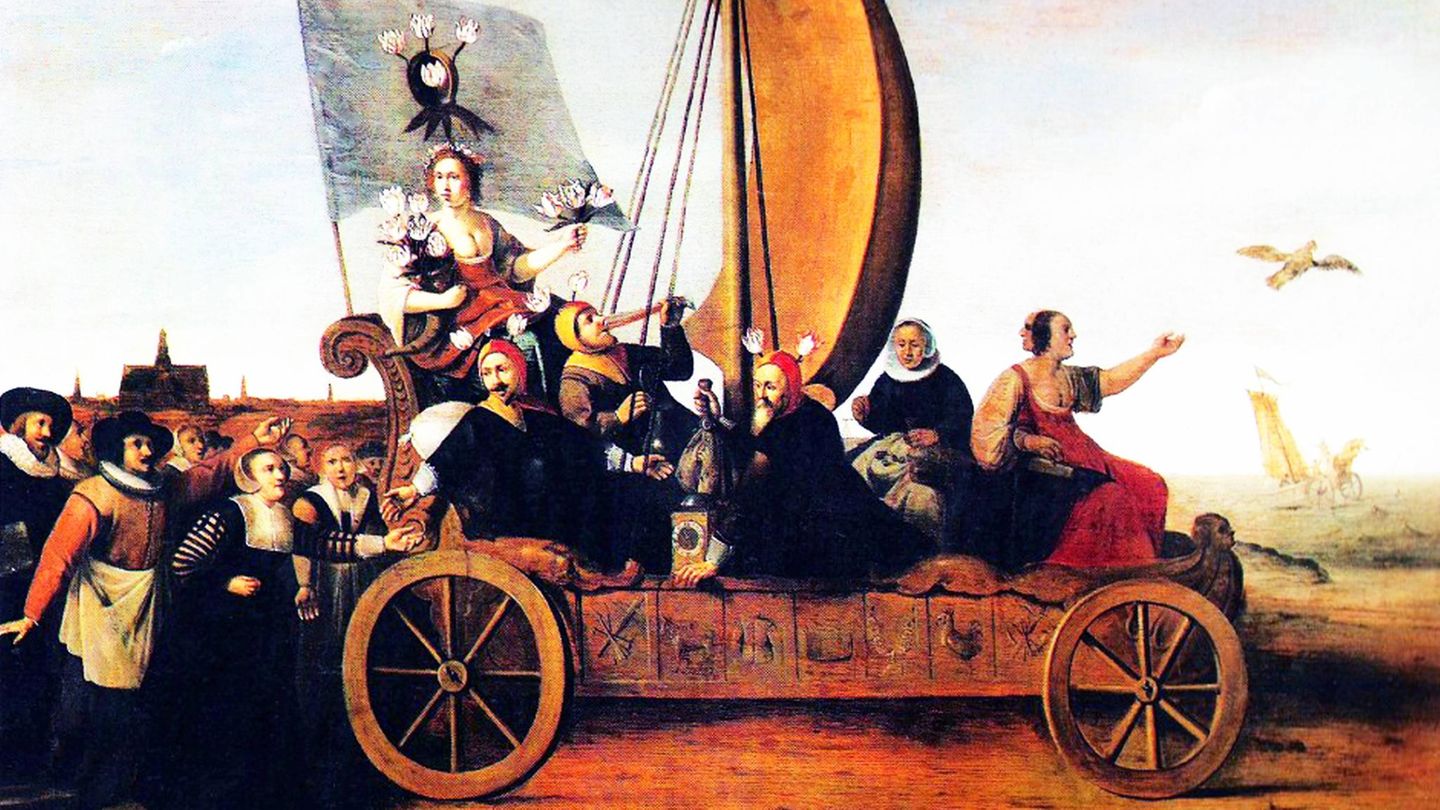It doesn’t take a cryptocurrency like Bitcoin to create a financial bubble. In the 17th century it was tulips in the Netherlands that caused a crazy boom. Until there was a bang.
Tulips and Holland – today they belong together for us. Around 80 percent of the tulips that we put in the vase today come from the Netherlands. But around 380 years ago the flower caused a stock market crash and then an economic crash. The tulip triggered the fact that the common people as well as rich aristocrats could dream of big money – and ultimately ruined themselves financially.
Today, hardly any business administration student can avoid the original crash, because the uncertainty of warrants and futures transactions can be perfectly explained using the tulip asset. Whether the real estate bubble in the US ten years ago, “Black Friday” 1929 or the bitcoin hype: the parallels to the tulip crash are striking.
Tulips for the rich and powerful
At first, the tulip – like so many things at the time – was reserved for the rich and powerful. A diplomat probably brought the flower from Constantinople to Vienna. At least the long-stemmed flower quickly became a popular souvenir from Turkey to Europe. The fact that the Netherlands of all places developed into a hotspot for the tulip trade was due, on the one hand, to the way the plant was cultivated. Botanists quickly bred special varieties – and began trading and trading them. . Because from one mother tulip bulb two to three new tulip bulbs grow. And after a few years the plant dies. However, it took years to bring new tulips onto the market.
And so the tulips also attracted thieves and crooks who stole flowers and bulbs. That too drove up the price of an onion.
Tulips became the tulip future
The price rose quickly. According to today’s value, you could pay 25,000 euros in the 1630s – for a flower bulb. The now extinct tulip “Semper Augustus” was even worth one million euros at times.
At some point it was no longer about the flowers, but about the rights to them. Warrants emerged, the market needed intermediaries, since a flower bulb was no longer passed on between seller and buyer. They got stuck in the ground – you just bought a promise on something that didn’t physically exist. The market swelled and the hope of profiting from the great tulip boom drove all sections of the population to invest.
Mortgages and Loans
The problem: the tulips were already infected by the so-called tulip breaking or breeding virus. The sick flowers made it to bloom once or twice – then it was over. But the investors didn’t know that. They invested because everyone was doing it, because everyone wanted to benefit from the boom. Even the common people. They took out mortgages on their houses, workshops, and shops. They borrowed money and put the sums in the tulip business. And then came February 1637.
The bubble burst quite unspectacularly. Until then, the business was only going because there was always someone dumber who wanted to get on board urgently. But suddenly the day came when one of the Tulip Future traders couldn’t find anyone who wanted to pay the crazy prices – at least that’s one of the stories about the big crash. The bubble burst, the price eroded. Everyone wanted to get rid of their options on future flowers. The state also took action and restricted it
Tulip crash made Rembrandt poor
Large parts of the. One of them was the painter known by his first name. The artist was already doing well then, but the tulip mania ruined the painter. On the one hand, he had invested a lot himself, on the other hand, the wealthy merchants lacked the money for works of art. But the tulip crash did not cause the economy to collapse completely. This was also due to the colonies and the international trade of the Netherlands.
Source From: Stern
Jane Stock is a technology author, who has written for 24 Hours World. She writes about the latest in technology news and trends, and is always on the lookout for new and innovative ways to improve his audience’s experience.




